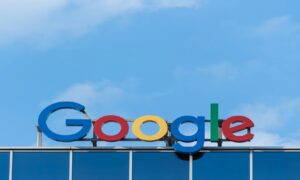Stefan Krause is passionate about automobiles. This passion, along with multifaceted experience in the automotive, technology, and finance sectors, fuels his lifelong dream of creating an electric vehicle (EV) Company.
Stefan Krause continues to lead the EV Revolution to bring clean energy transportation solutions to the world in his new role with GoFor. GoFor provides “last-mile, on-demand, and same-day delivery services
Krause joined the GoFor team on June 30th, replacing co-founder and former CEO Brad Rollo as Chairman and Board Director. His role will be to lead company efforts to deliver innovative alternative delivery services, including new technology, that addresses sustainability challenges.
“I’m very excited to join the board and help establish GoFor as the leading provider of renewable delivery services and solutions. Sustainability is a top priority for both logistics providers and their customers. Delivery companies that can provide net-zero, carbon-negative last-mile package delivery are well-positioned to win in this market.”
— Stefan Krause via BusinessWire
Ian Gardner, CEO of GoFor, explained why Krause is the perfect addition to the Board of Directors this way:
“As we pursue our vision of becoming the #1 renewable delivery company in the world, Stefan’s experience in the capital markets and specifically with SPAC transactions, governance, and financial oversight will pave the way for GoFor to take advantage of extraordinary market demand for renewable last-mile delivery solutions. His electric vehicle subscription service and leasing experience will provide valuable guidance as we forge strategic partnerships, pursue acquisitions, and continue to bring investors on board to fund our ambitious strategy.”
What Is the EV Revolution?
The EV Revolution is a transformative effort to bring the world closer to the full adoption of renewable energy solutions, including innovative transportation and delivery methods. Many compare today’s shift from petroleum-fueled vehicles to clean-energy vehicles to the days when people replaced their horse-drawn carriages and wagons with gasoline-powered cars and trucks.
In the early days of horseless carriages, the local gas station was nowhere to be found. People had to purchase gas from a mercantile and take the fuel to the vehicle. Long-distance travel was difficult. Few people thought of gas cars as a viable solution for food and essential supply delivery. Steam- and coal-powered trains continued to move cattle, food and building supplies long distances. Drivers in buckboards and covered wagons handled local deliveries. Gradually, more people saw the benefits of owning their own vehicles. Gas stations began to appear in cities and rural communities. Fear of being stranded dissipated. Confidence grew, and people began to venture farther from home without worrying about refueling. Today, it is impossible to imagine a world without gas-guzzling cars running up and down the highways 24/7 and a self-service pump on almost every corner.
We are now on the precipice of another life-changing evolution, one that puts recharging stations in every town and city. A change that delivers clean energy, EV technology woven into the infrastructure of every nation around the globe.
Changing Expectations Is the Key to EV Industry Growth
People have grown accustomed to a quick stop to refuel their cars. Adjusting to a 30-minute or 1-hour refueling stop is hard to rationalize when planning a cross-country trip. Getting used to stopping more frequently, before the “tank” is empty, is another challenge. When a battery pack gets very low, it takes longer to recharge. Additionally, continuously draining the energy source reduces battery life. It is hard to see the benefits of such a huge paradigm shift. Battery technology is at its infancy. New technology will increase driving range considerably and reduce charging times significantly. It took almost a hundred years for the combustion engine technology to be as efficient as it is today.
However, there are benefits. Remember when COVID restrictions had the world huddling in their homes? Along with the rise in telecommuting and home-based education, we saw a huge reduction in smog and pollution. Satellite images showed an unprecedented reduction in airborne pollution within days, as drivers parked their cars and began working from the home office. Therefore, a wide adoption of electric vehicles will show similar positive effects without people being locked up.
One challenge for Stefan Krause and other EV industry leaders is finding seamless recharging solutions that resonate with drivers. Lot of investment into new charging solutions will enable a seamless life with electric cars. Charging will no longer be something you have to do but will be something that happens while you do something else (dining, shopping, sleeping, outdoor activities…)
Transforming the Infrastructure With EV Technology
While today, the goal is to add more charging stations and to educate drivers about the myriad health benefits that come with ditching the gas guzzler for an electric vehicle, that isn’t the pot of gold at the end of the rainbow.
One goal is developing and building electric charging stations that don’t require you to exit your vehicle to recharge the battery or pay for your “fuel.” The good news is that these technologies are already available. Fast, convenient automatic charging has been in commercial use in Europe for several years. And, a handful of states in the United States, including Pennsylvania, have installed automatic refueling stations in select cities.
With adequate federal funding, and an aggressive marketing campaign to educate drivers, the EV Revolution could make driving electric vehicles preferable to gas-powered transportation. Changing the way people think about EV transportation demands industry leaders, like Stefan Krause, move swiftly to secure financial support for rebuilding our nation’s infrastructure.
Overcoming Ingrained Expectations
Overcoming expectations is perhaps the greatest challenge for EV industry innovators. For more than a century, the world has depended on the gas-powered automobile. People expect their cars to look a certain way, feel a certain way, drive a certain way. This preconceived notion often influences designers. Few are willing to break free from the traditional mold.
Removing the combustion engine will allow designers to rethink the way a car looks and feels. Krause envisions a flat “powertrain” with ample space to create new vehicle architecture on top. This new way of thinking could allow new vehicles that “have the footprint of a VW Golf with the interior space of a Suburban.”
Encouraging entrepreneurs and automotive designers to escape traditional design will open the flood gates for innovative thinking when creating smart cars and commercial delivery vehicles.
Beyond Sustainability & Appearance
There are other considerations for designers beyond creating energy-efficient vehicles. For one thing, safety will always be a concern for motorists. Removing the heavy combustion energy allows an innovative crumple zone design that protects vehicle occupants during a crash without worrying about the engine coming into the cabin.
Another major difference between EV vehicles and petroleum-powered autos is maintenance. A combustion engine has a few thousand parts; whereas, an electric car typically has a dozen or fewer, which means fewer things to break down. Plus, without the engine taking up so much space, there is ample opportunity to build a smaller car with a spacious, customizable interior. For example, a designer could create a car with extra headroom or legroom for taller individuals. Commercial delivery vans could be designed to accommodate diverse cargo shapes and sizes.
About Stefan Krause
Among his many career accomplishments, Stefan held numerous high-level positions at BMW, including sales, engineering, marketing, and financial services positions. He became member of the Board of Management of BMW and Global CFO of BMW in 2002. In 2008, he assumed the role as the Global CFO at Deutsche Bank. In 2017 he co-founded the California based electric vehicle company Canoo. Recently, VELO3D, a 3D printing company, onboarded Krause due to his extensive expertise in branding and marketing and public company experience.



















































